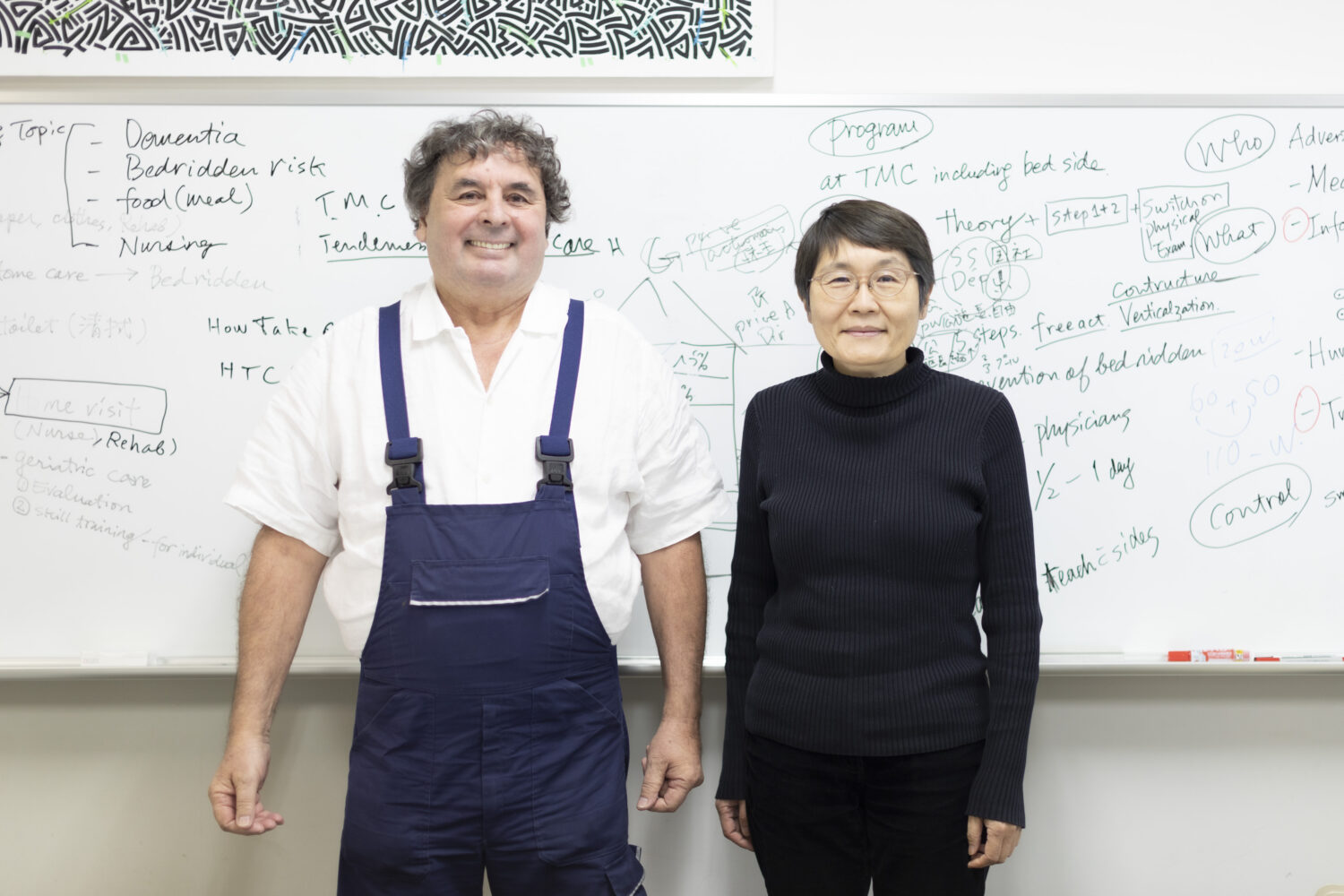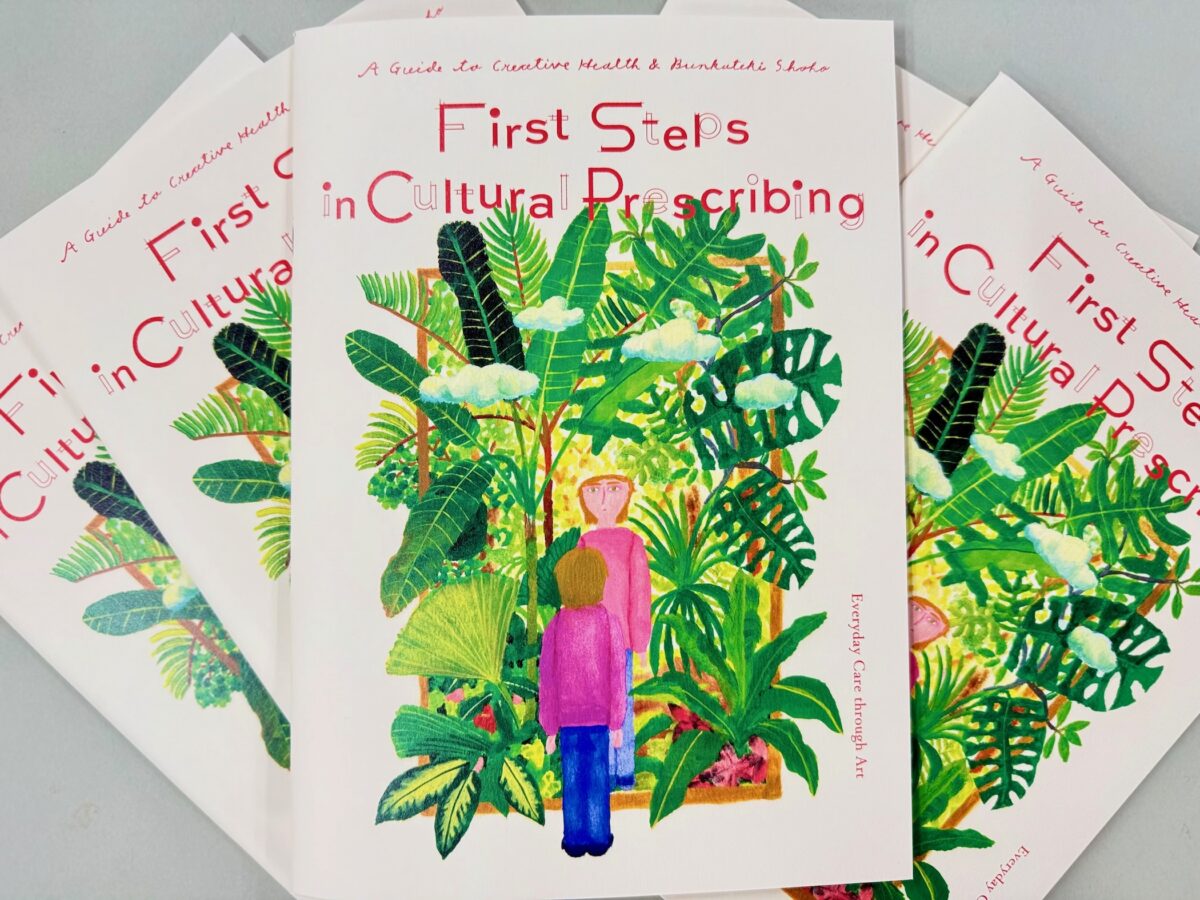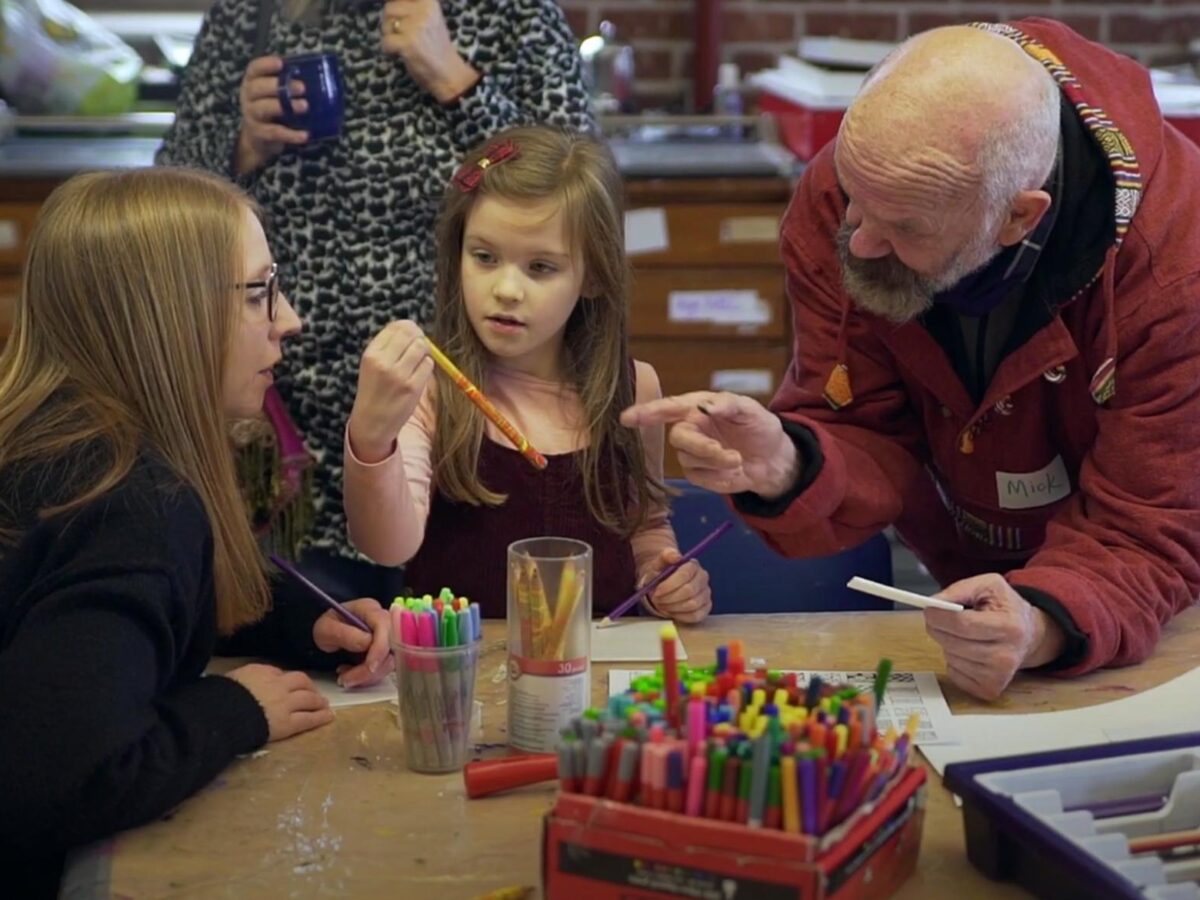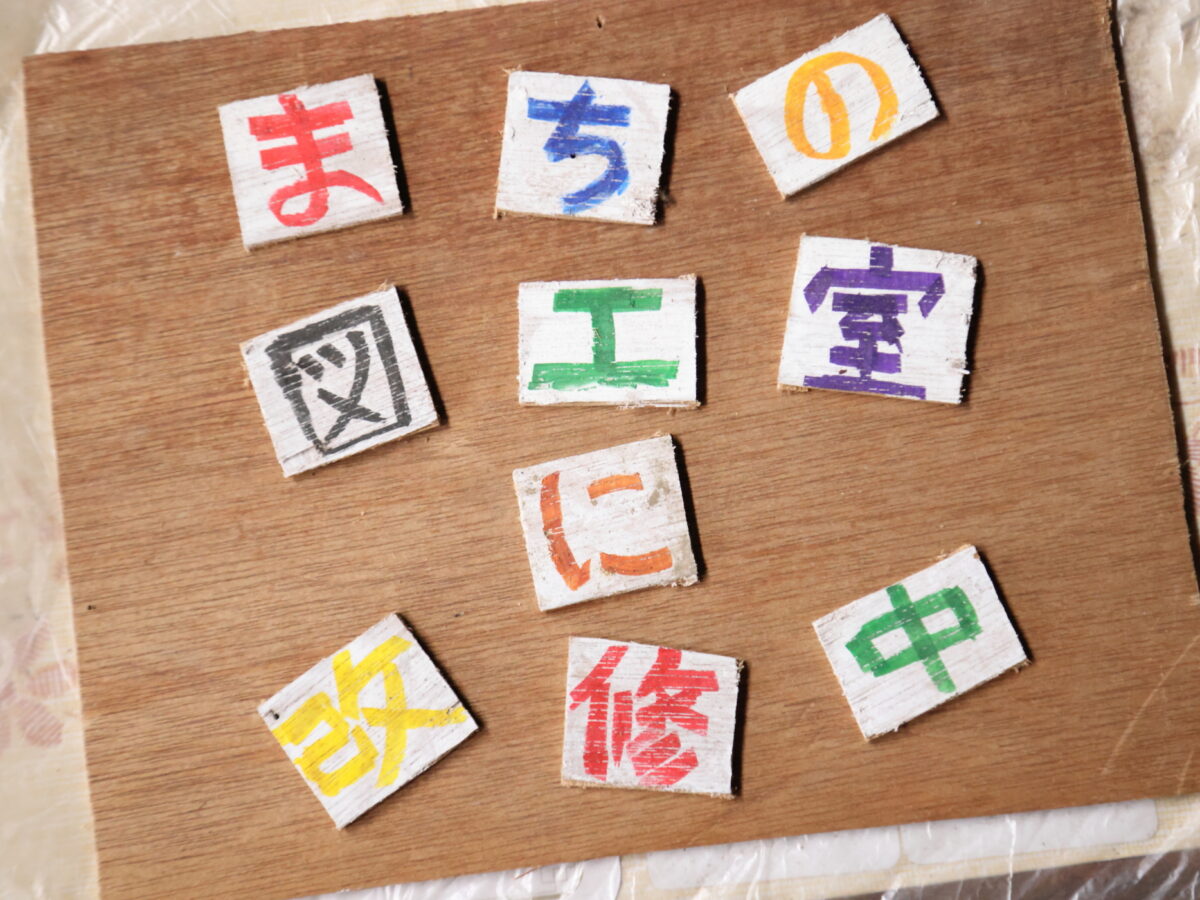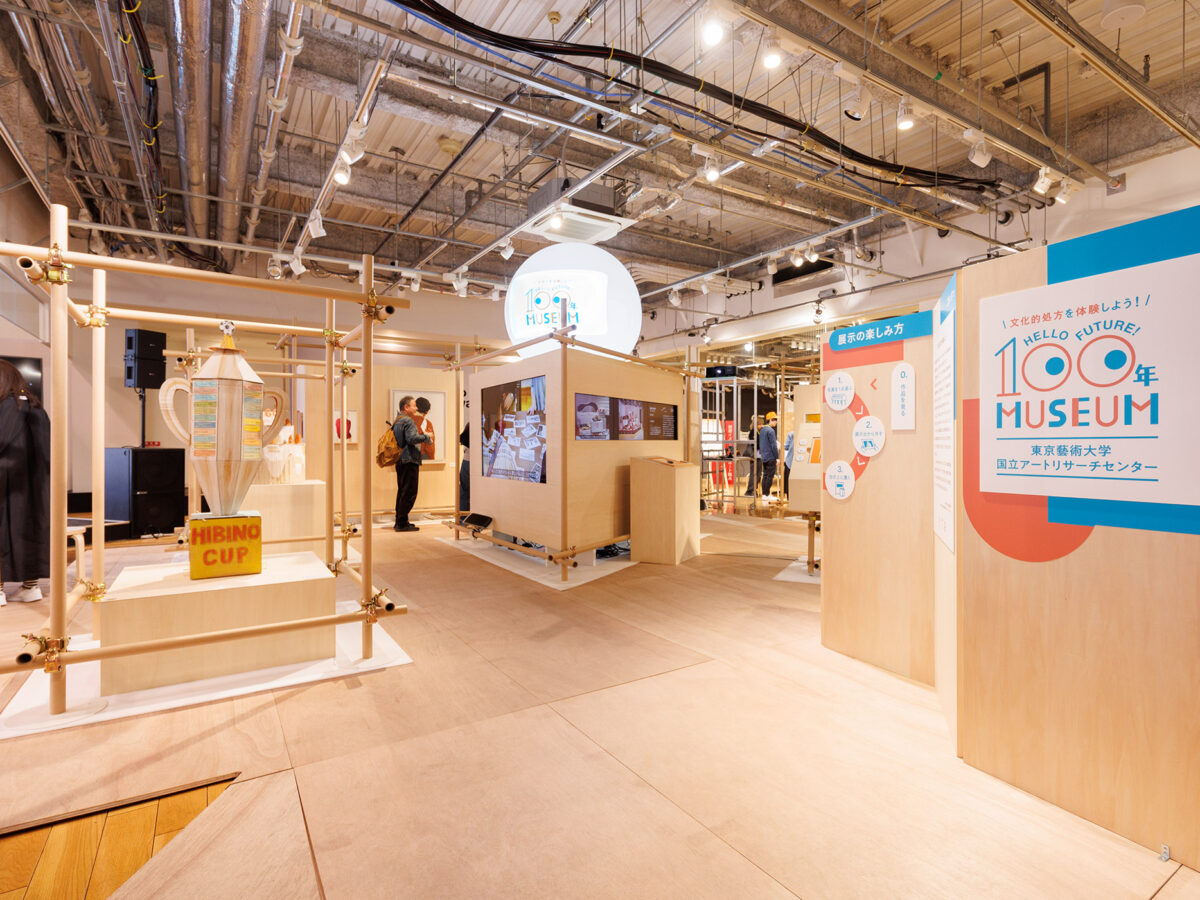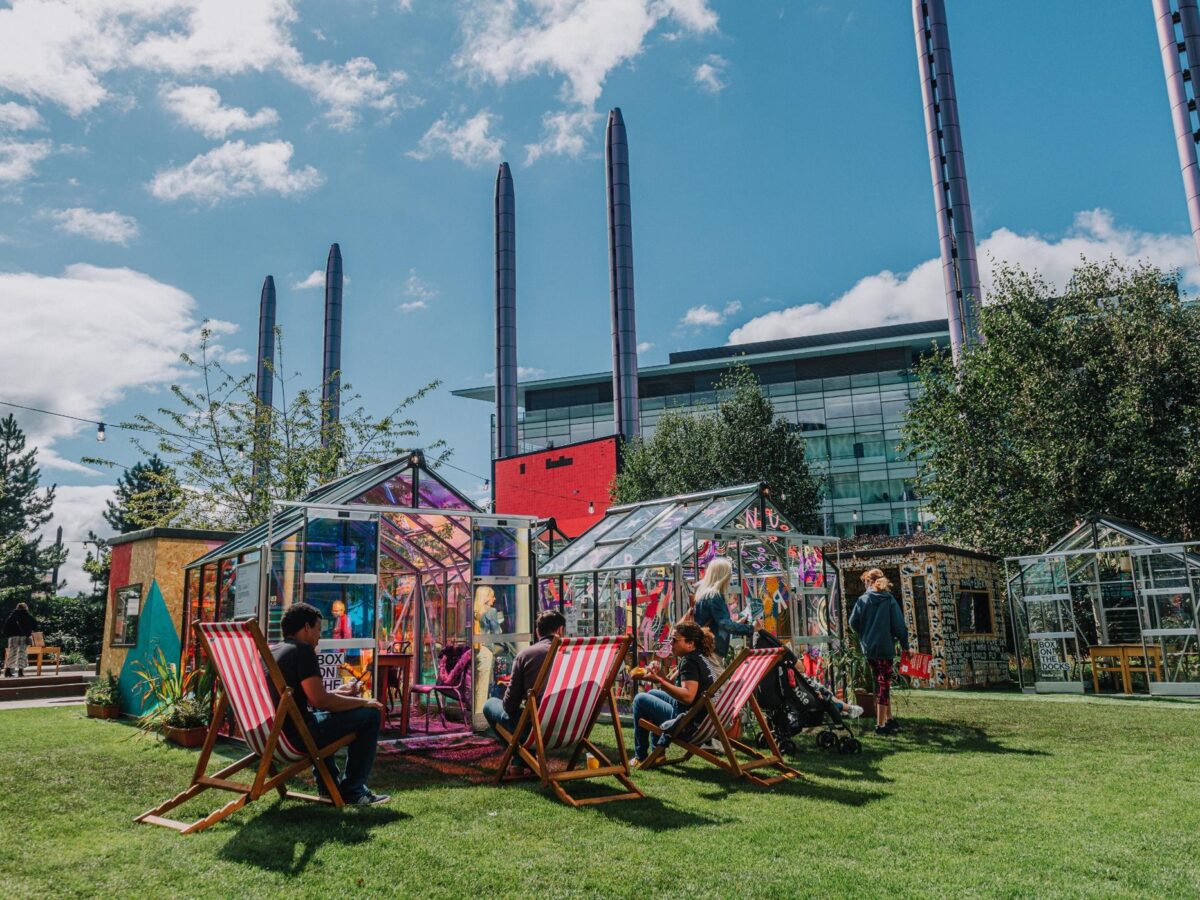
Humanitude – a method of caregiving conveying compassion. A Humanitude training course was held for art communicators at “Koto! Koto? Kawasaki“ in Kawasaki City, Kanagawa Prefecture between summer and autumn 2024. But why would art communicators study this caregiving technique? We spoke to Dr. Miwako Honda, Representative Director of Japan Humanitude Association to find out more about Humanitude and the goals of the workshop.
目次
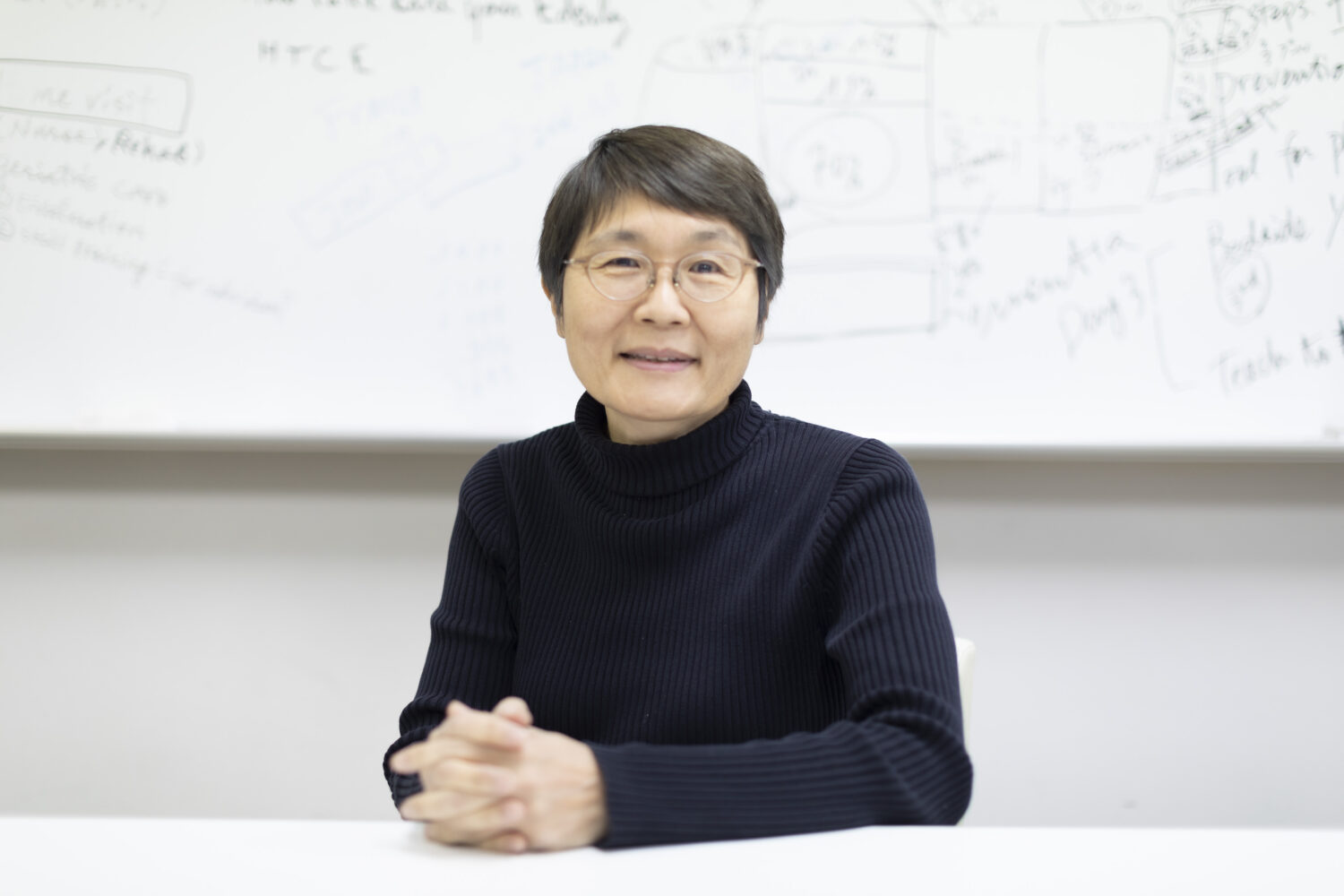
Humanitude is a care method based on comprehensive communication through perception, emotion and language developed by Professor Yves Gineste and Rosette Marescotti, both French physical education professionals. Coined from the French for“being human,”Humanitude consists of over 400 practical techniques built around the philosophy of discovering what it is to be human.
Speak softly, maintain eye contact and wait for a response.
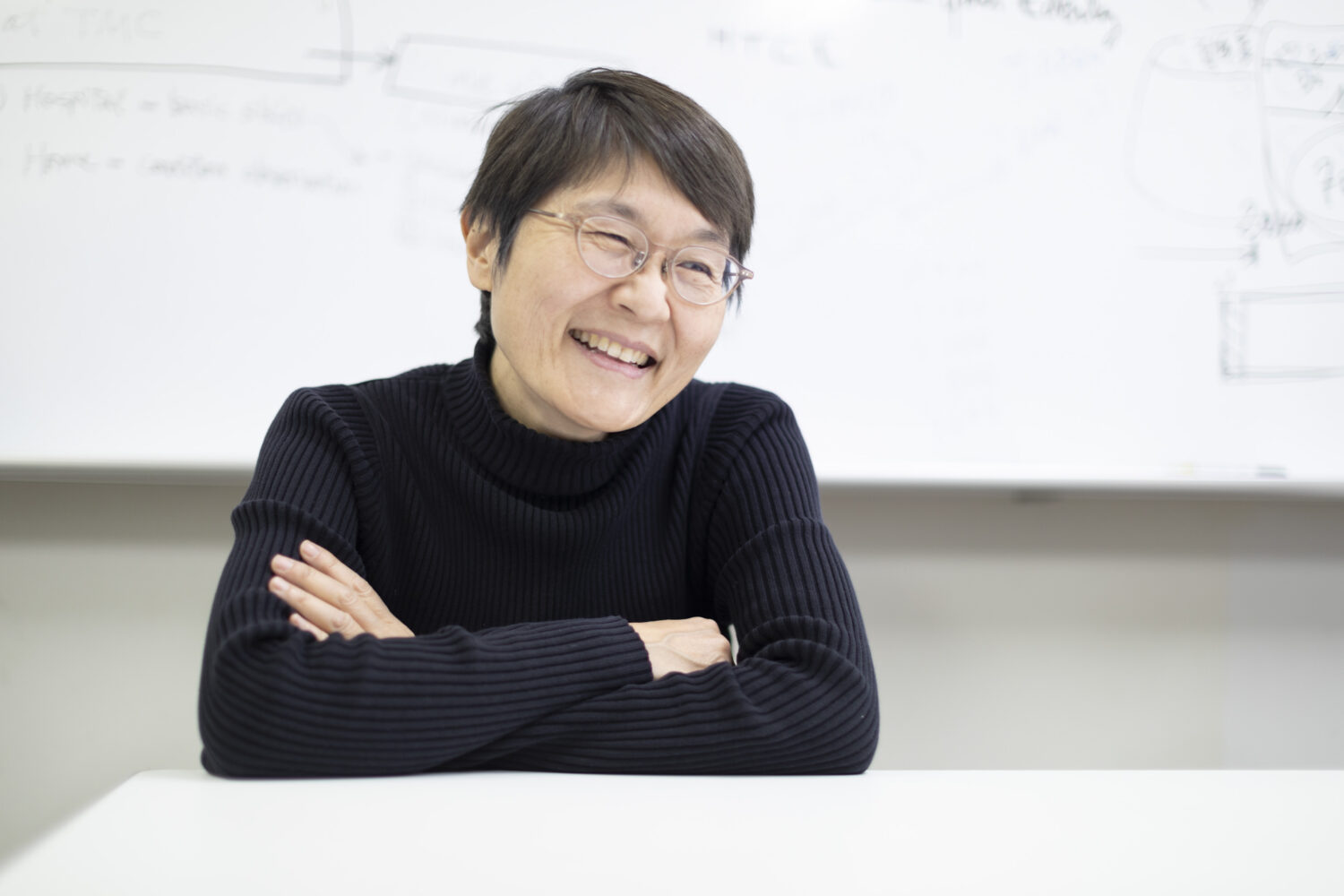
Editor Please tell us how you came to know Humanitude.
Honda I became interested when I read an article about Humanitude in 2008. I contacted Prof. Gineste and observed his work firsthand in 2011.
I also participated in Humanitude training and tried the method myself. I was so surprised by the results as every aspect of care including changing clothes and brushing teeth went so smoothly. Even if we cannot communicate through language or have no caregiving experience, we can communicate with patients through the Humanitude method. I thought it was excellent.
When I went back to Japan and told the nurses around me about Humanitude, many nurses wanted to learn the method. I think many had trouble communicating effectively with their patients. After I consulted Prof. Gineste and Rosette Marescotti, Prof. Gineste decided to come to Japan. This was the start of our journey disseminating the Humanitude method across Japan.
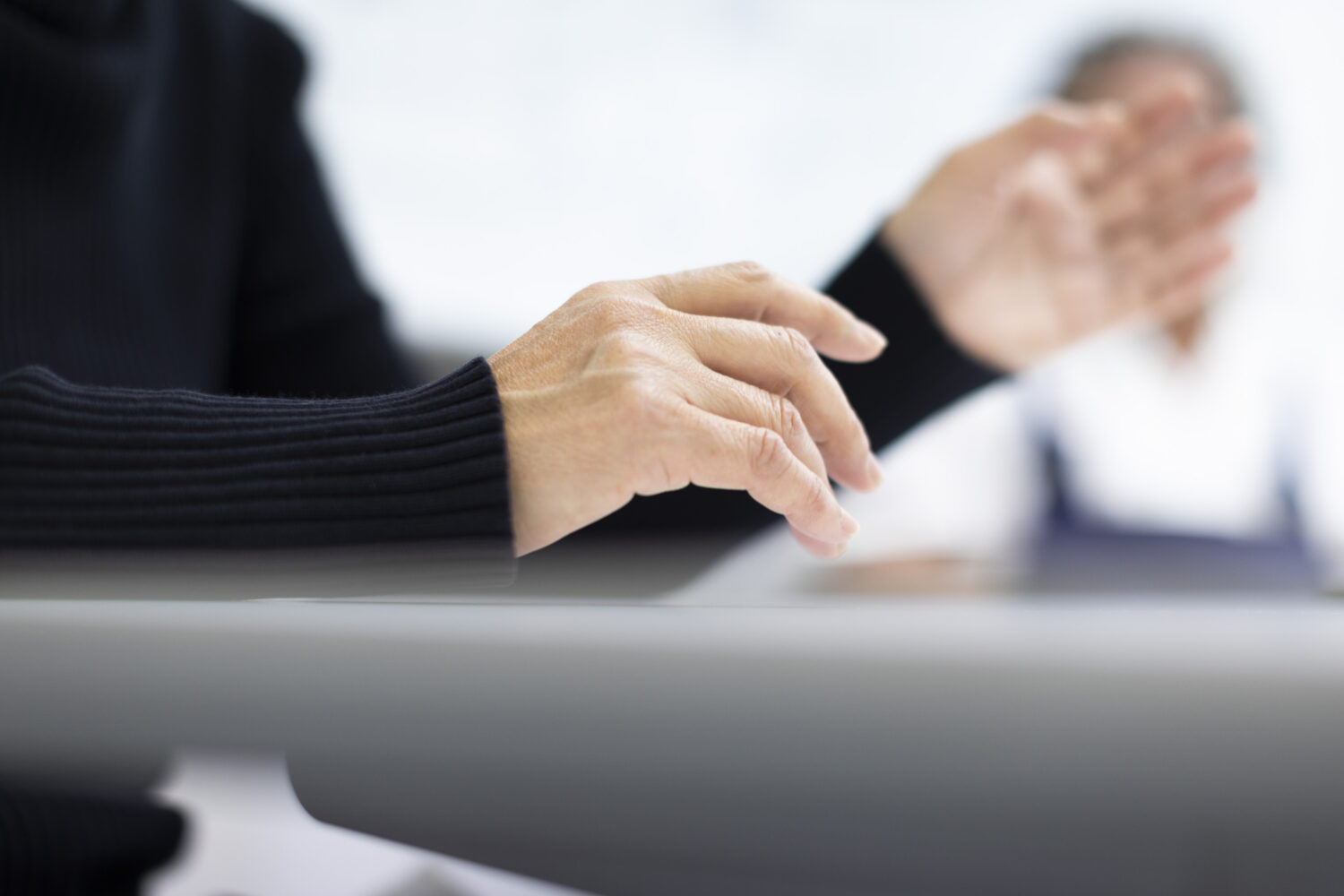
Editor What are the differences between standard caregiving and Humanitude?
Honda I think it’s hard to grasp unless you are a healthcare professional, but a fair number of patients don’t react even when spoken to. Eventually, caregivers begin to not expect a reaction from their patients. For example, they might knock on the door before they enter a patient’s room, but they will open the door without waiting for an answer or a reaction. In our everyday lives, we enter a room after receiving permission to do so, but in some environments, cultures and relationships, this normal behavior can become forgotten or ignored.
Even though caregivers try to be polite to patients, their behavior implicitly conveys the feeling that they have no intention to accommodate the thoughts of the patient. In this type of relationship, patients lose trust in the caregiver. Especially when a patient has damaged cognitive functions, this situation can lead them to be frightened and refuse care. I think such cases are common in the medical field.
Gineste In the survey of care facilities in France, half of 1,000 medical doctors, nurses and caregivers did not knock on the door when they entered a patient’s room. The other half knocked, but entered without waiting for a response. In the past, there were no doors to patient rooms, so they might not have been used to knocking on doors before entering rooms.
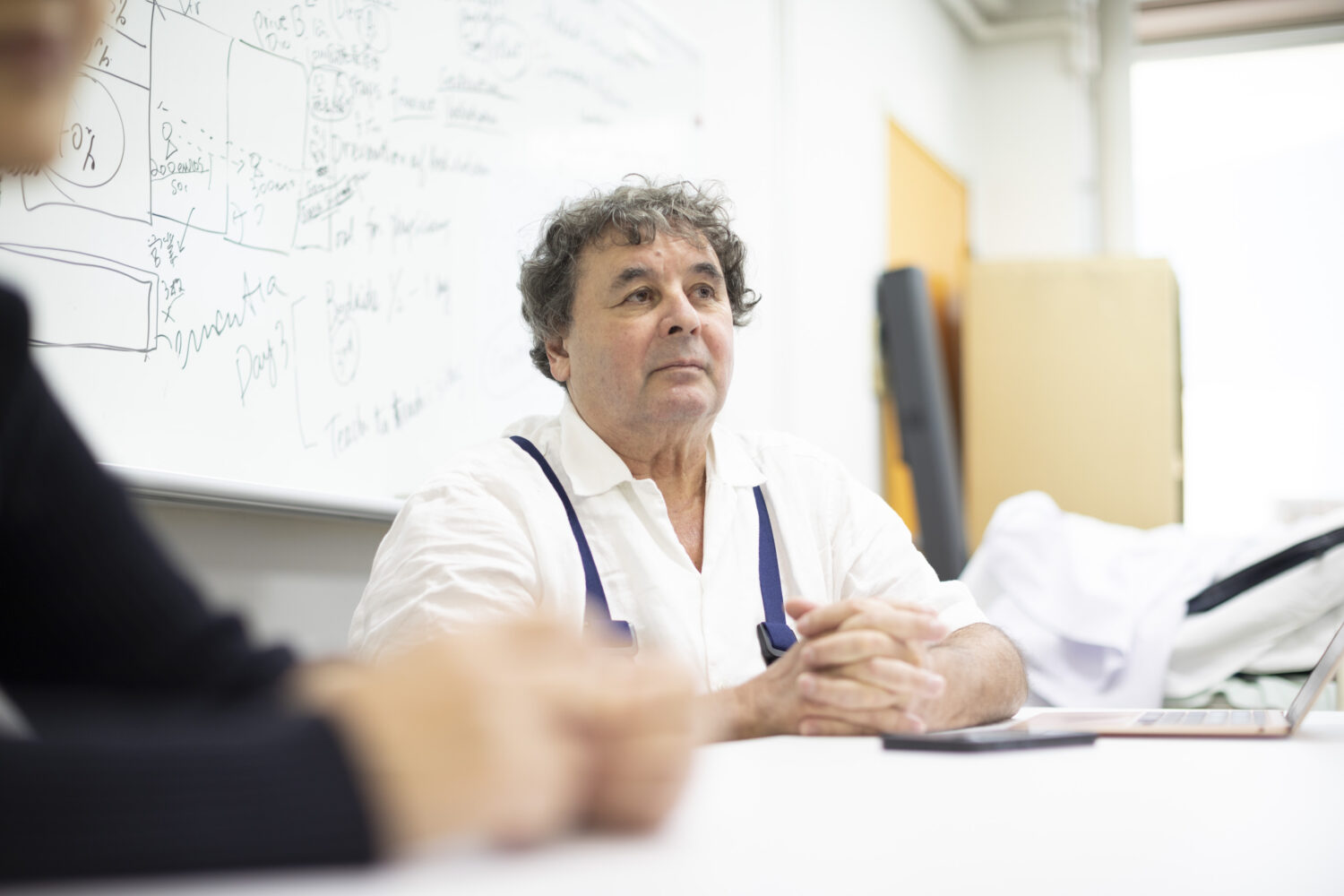
Honda With the Humanitude method, we started by knocking and entering the room after a response and greeting the patient with eye contact. This practice helped the patients accept the care they were given as they felt the caregiver cared about them.
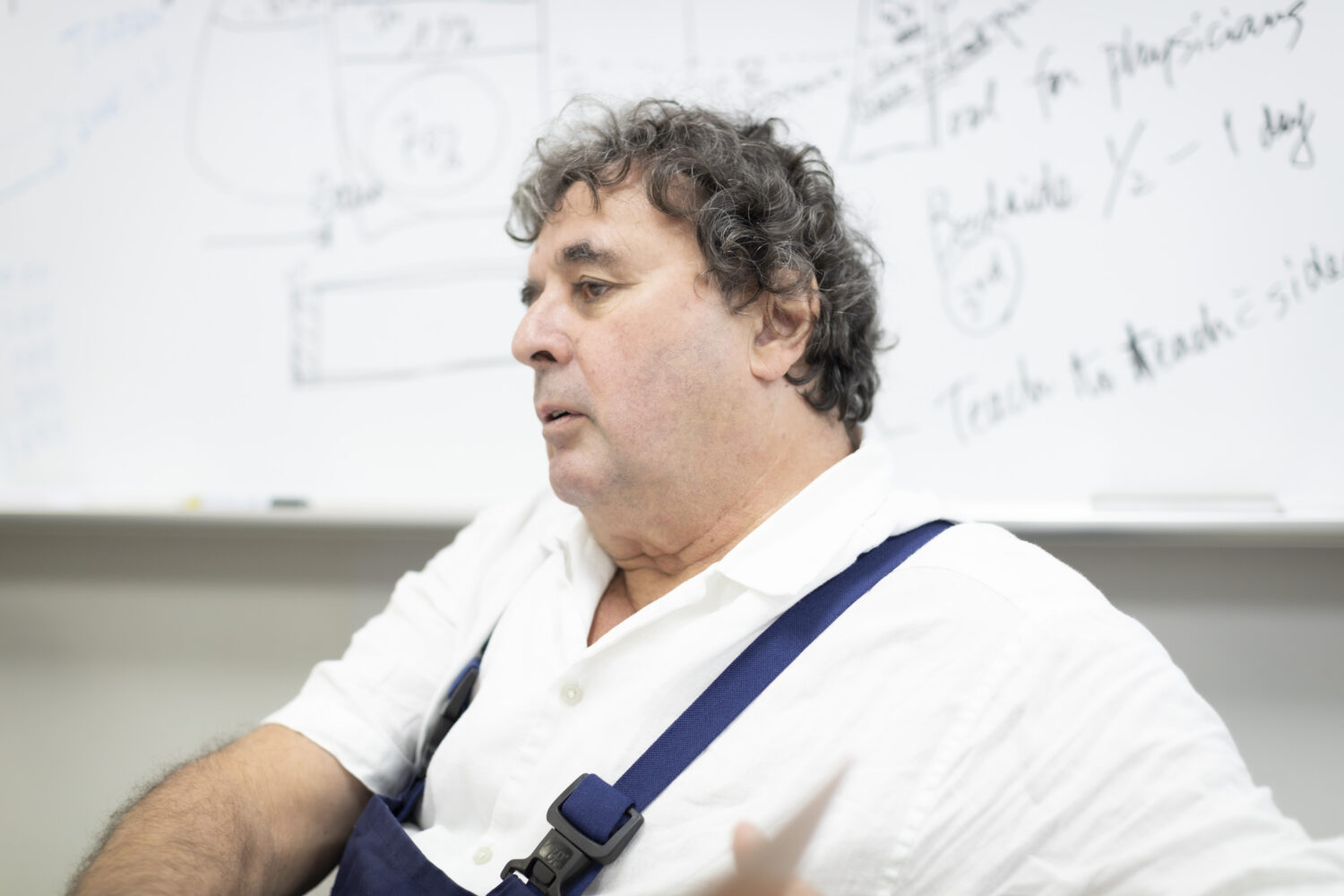
Gineste In one hospital, nurses provided care with a minimum of words and without eye contact to a patient who had not spoken for ten years due to the sequelae of an intracranial hemorrhage. However, after caregivers learned the Humanitude method, they experienced 25 times more communication, and the patient’s expression became more animated than before. Most surprisingly, the patient finally spoke after ten years of silence. Even for patients who are unresponsive, it is very important to treat them as human beings in a polite and gentle way.
Editor How widely is the Humanitude method accepted in France and Japan?
Honda While many people know about the method in France, not all hospitals use it. In Japan, over 10 thousand people have been trained. Teachers of medicine and nursing science faculties are interested, and now the Humanitude method is included in the education system.
After healthcare professionals gain a certain amount of experience, they often face a quandary that even with the latest therapy or the best facilities, nothing happens unless the patient accepts the care. This search for a solution creates a need for the Humanitude method.
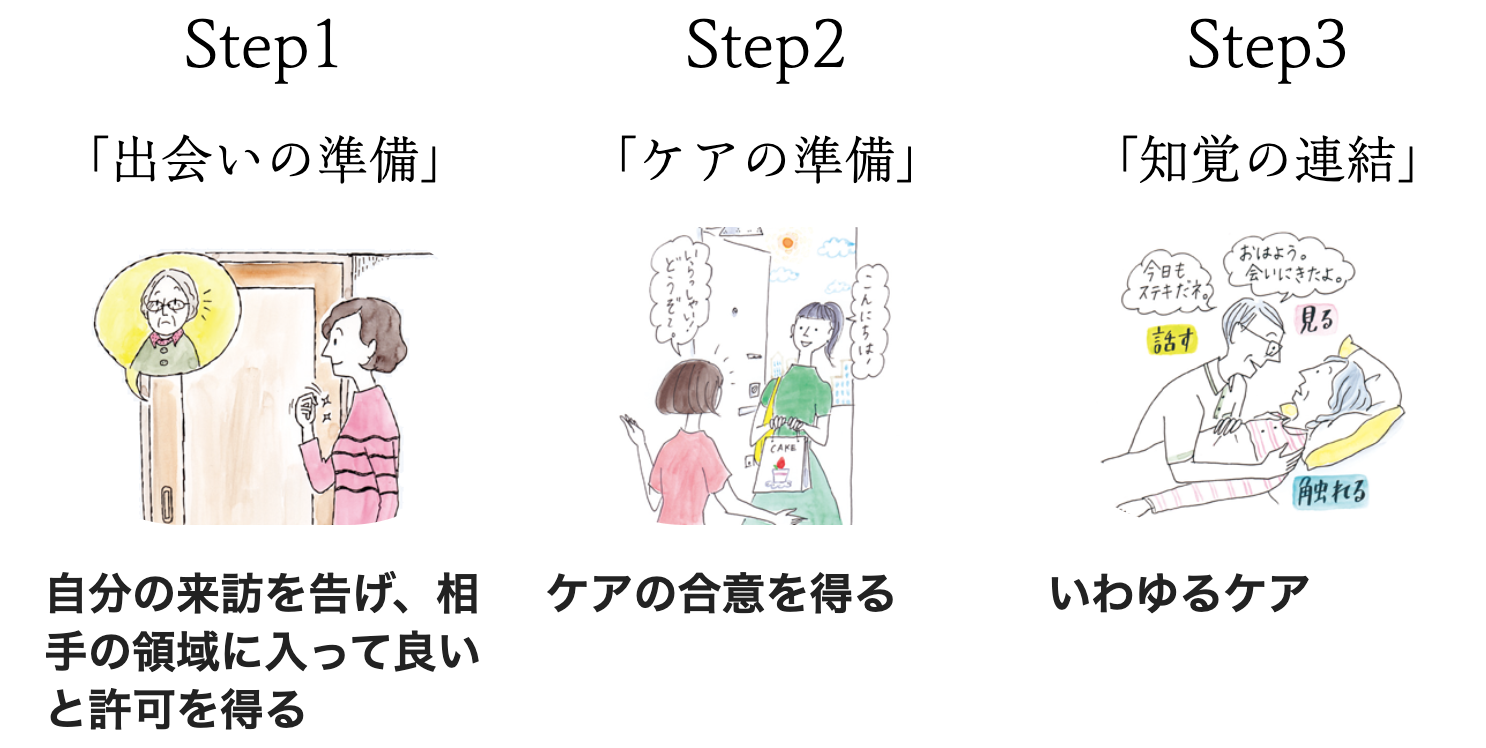
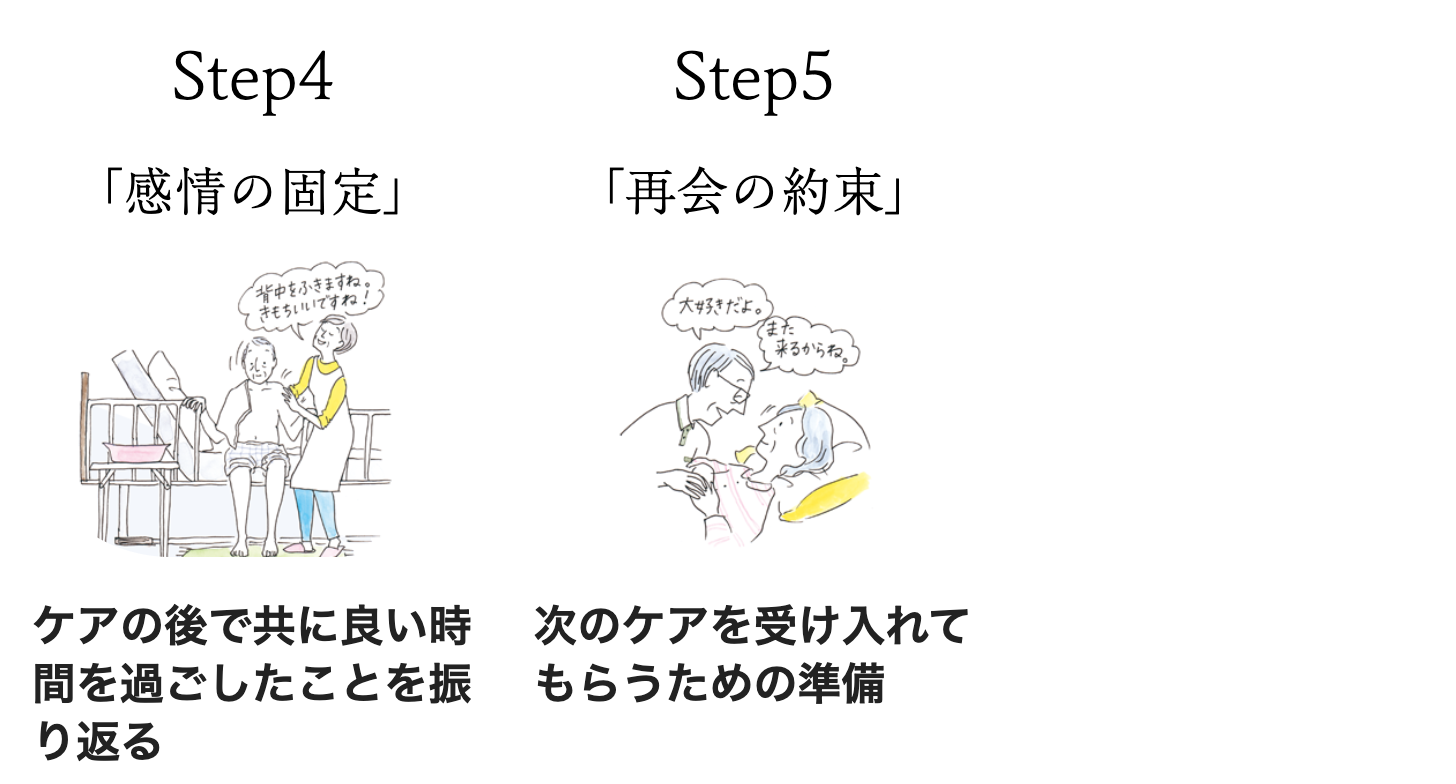
Step 1 Prepare for the Encounter
Inform the care recipient of your presence and ask them permission to enter their personal space.
Step 2 Prepare for Care
Receive consent from the care recipient to provide care.
Step 3 Perceptual Connection
Provide care.
Step 4 Emotional Anchoring
After the session, reflect on the good time you just spent together.
Step 5 A Promise to Meet Again
A way to prepare the care recipient to accept the next care visit.
Taken from the Japan Humanitude Association website (https://jhuma.org/humanitude/Open in a new window). The Humanitude care method comprises five steps, with each step following the next like a story. If you would like to know more about Humanitude techniques, please visit the Humanitude website for details.
Anybody can support the “third birth” of somebody else
Editor Please tell us about the Practical Care Workshop for Art Communicators held at “Koto! Koto? Kawasaki.”
Honda I was invited to introduce Humanitude to the Care and Art Project led by Tokyo University of the Arts and they were fascinated by the subject. I was asked if the Humanitude method could be used to help the elderly and/or disabled appreciate the arts, so I introduced Humanitude to the people of Kawasaki City.
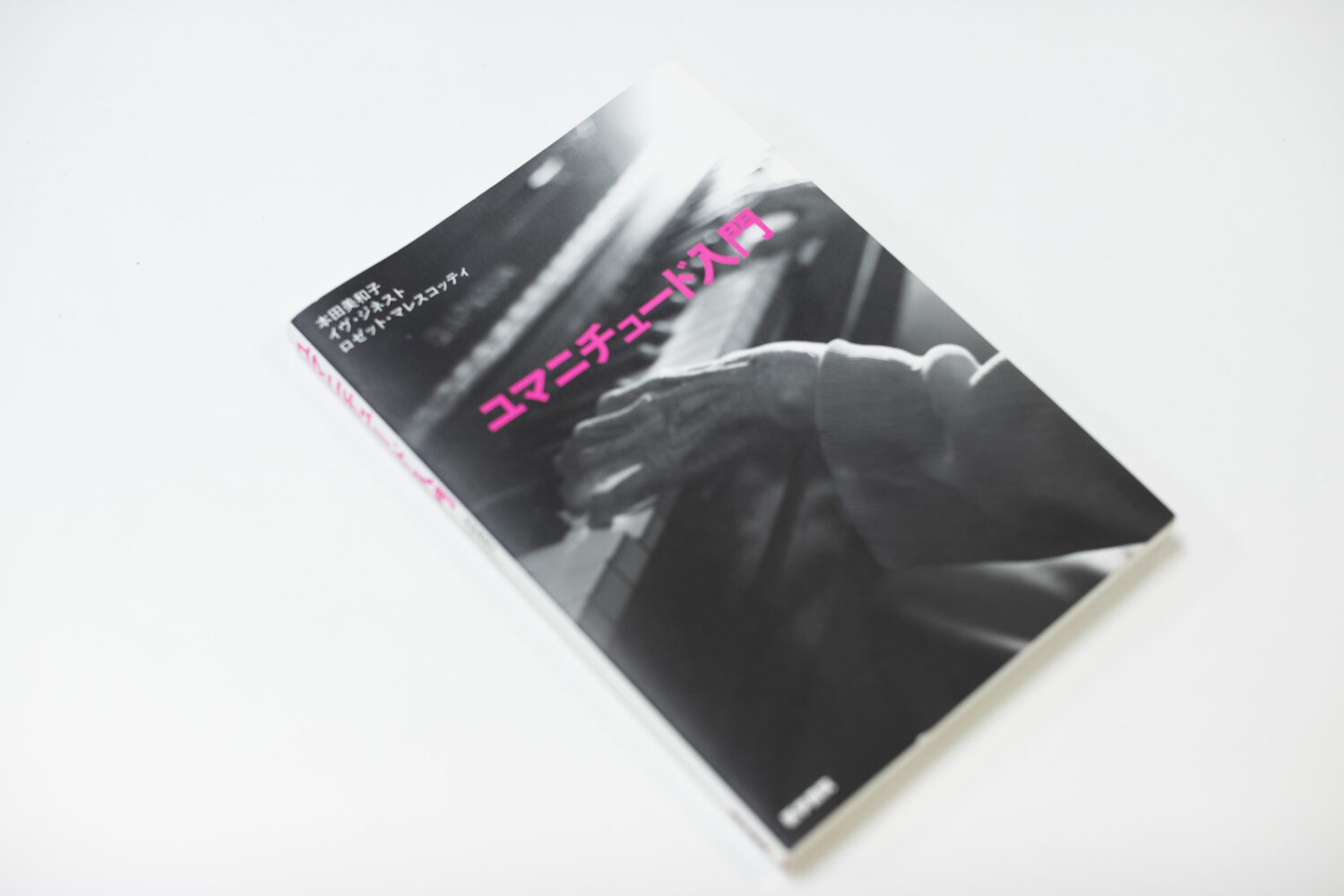
Editor What did you think of their idea?
Honda Humanitude is often introduced as “care for people with dementia and elderly people.” This description is not totally wrong, but it is not 100% accurate either. Humanitude is a method that can be applied in all manner of ways to offer a service to humanity. It is a way to share good times together and to have people accept what Humanitude providers want to deliver. Therefore, I believed that Humanitude could help in art appreciation programs.
At the same time, when I heard it is more important that people feel touched through the arts than art itself, I felt it shared a similar spirit to Humanitude, as the concept of Humanitude emphasizes how building good relationships through care is more important than care itself.
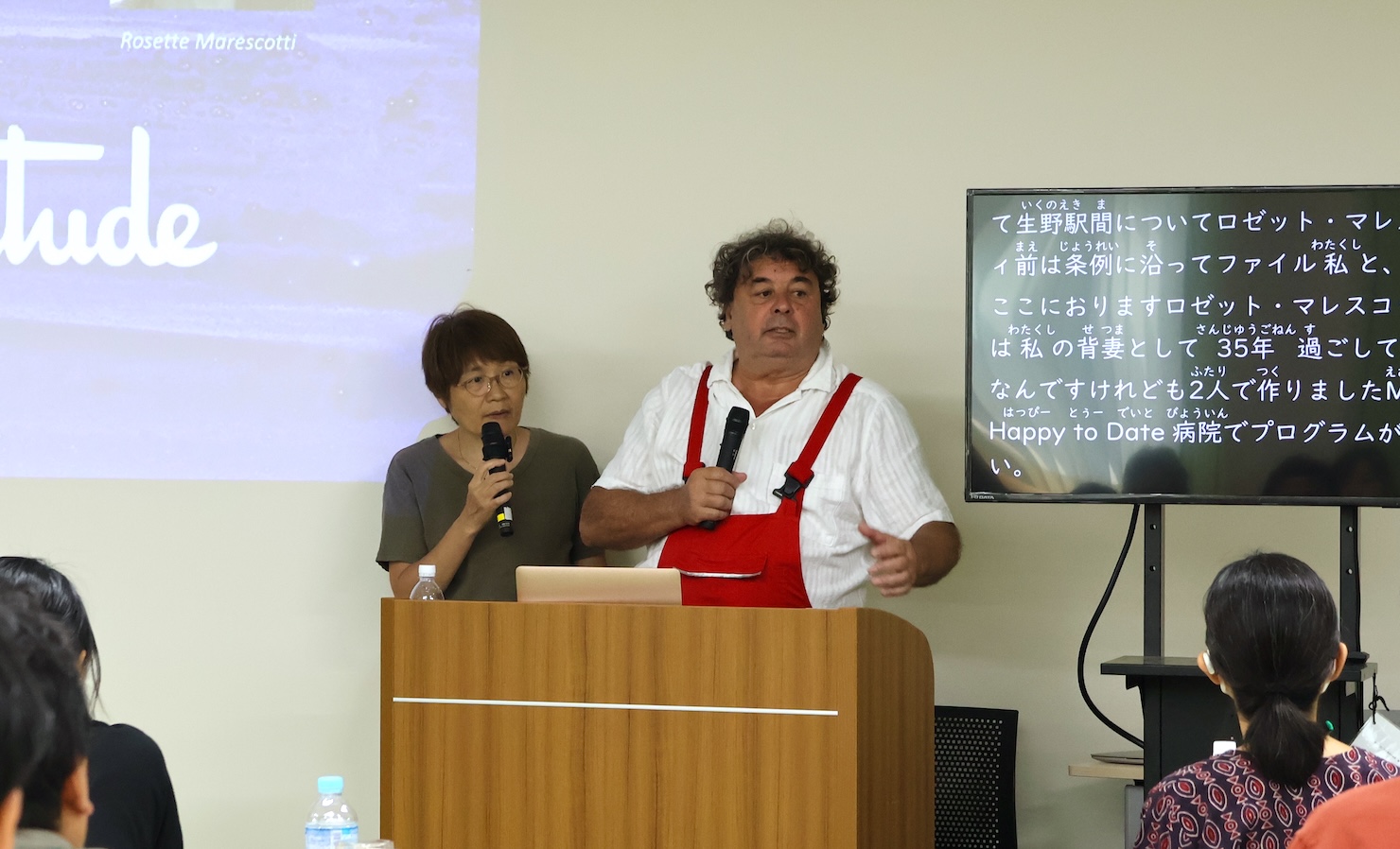
Editor What message did you bring to the workshop?
Honda I mainly talked about the basics of Humanitude, how to convey the message: “I care about you.” To convey this message, it is important to respect the other person as a human being. Now, what is a human being? Prof. Gineste always says, “people are not born human.”
In Humanitude, biological birth is called the “first birth” and recognizing ourselves as humans and developing socializing skills is called the “second birth.” Children connect to society through their feelings, being spoken to and how they are treated as a human by those around them. The message “I care about you” is important for children to grow into human beings.
However, when people get ill and/or lose family members and friends as they grow older, they sometimes lose the warm connections they have with other people. People in such circumstances start to feel they are not treated like a human being and tend to withdraw into themselves. Even when they are spoken to, they do not react, nor do they accept the care or service being offered. In such a situation, if somebody again conveys the message “I care about you” through intentionally looking, talking, and touching, they can be reborn and regain humanity. We consider this an important stage and it signifies the “third birth” in the Humanitude method.
Gineste We all hope to be loved as humans by somebody even when we get older or become ill. When I visit a hospital, elderly patients sometimes ask me for a hug or a kiss. You do not have a culture of exchanging hugs or kisses in Japan, right? I believe such senses exist somewhere deep in our bodies, and we naturally seek it when we open our minds. Many Japanese might not yet recognize the fact that we were born like that.
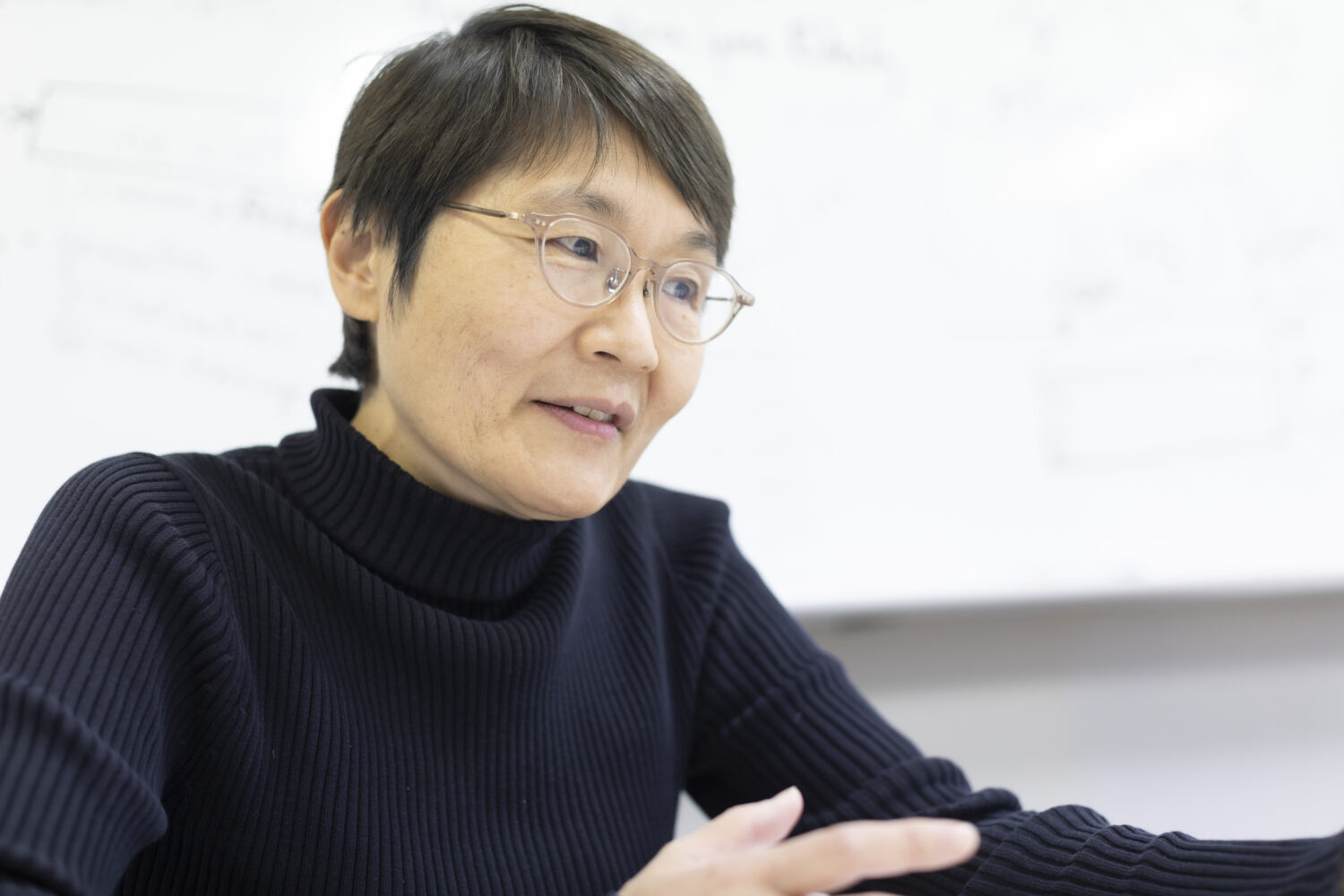
Editor Can somebody who is not a care professional, for example, an art communicator, support somebody’s “third birth”?
Honda Sure, of course. I often hear people treating a relative or neighbor who is feeling down using the Humanitude method, and it allows them to enjoy quality time together. Art communicators who took our workshop applied it to their families and to society. Anybody can be a practitioner of the Humanitude method.
Society with Humanitude
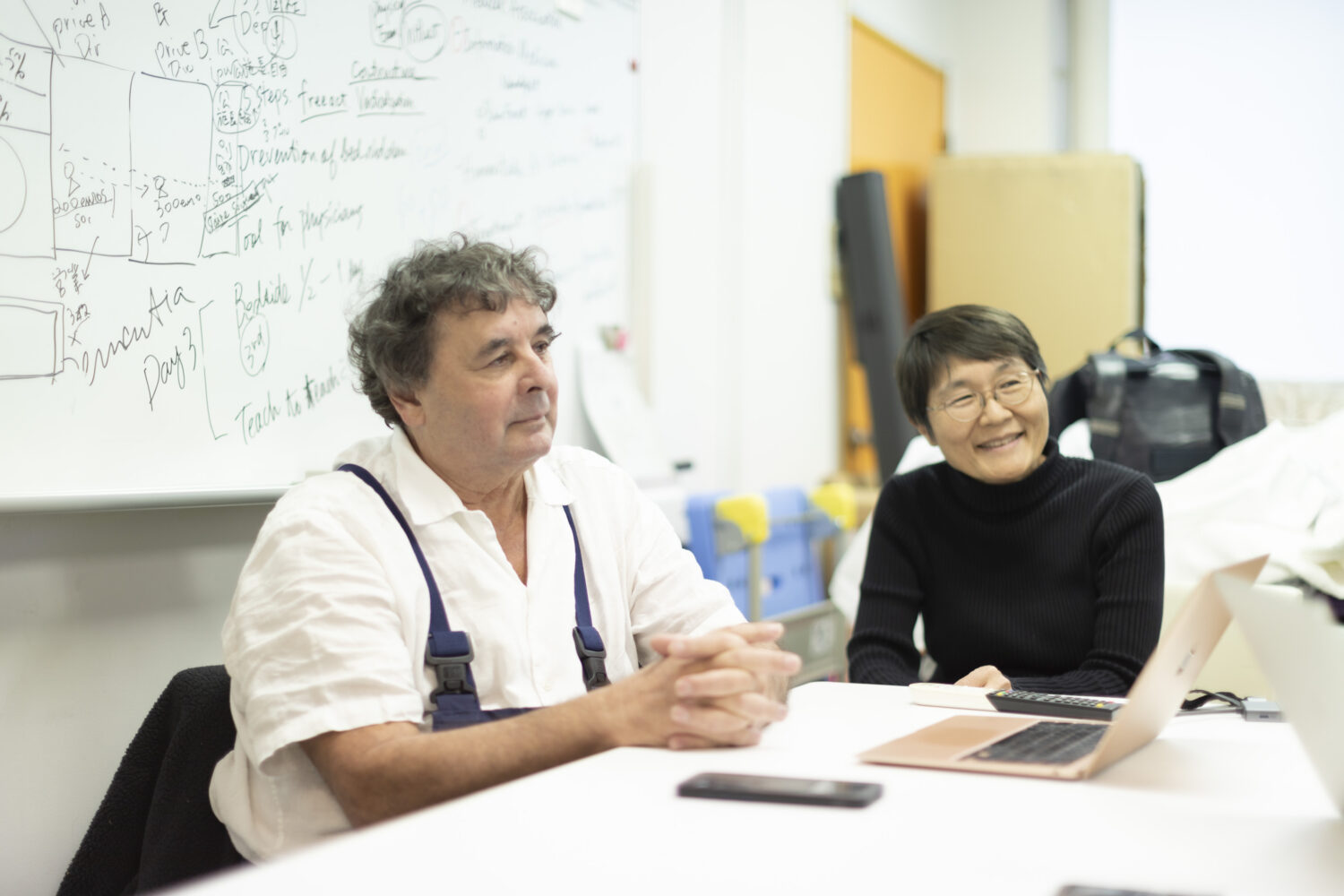
Editor Please tell us your future plans.
Honda Many people feel lonely wherever they live, in hospitals, nursing homes, or even alone at home. Even though they live with their family, some people have difficulties communicating with them. Some people want to help, but wonder how they can support people who feel lonely or have problems. I hope the Humanitude method can be used widely as an infrastructure supporting people who want to support others.
For example, Fukuoka City boasts the Department of Humanitude Promotion in the Bureau of Social Welfare, and hospital staff, fire station staff and ambulance teams learn about Humanitude. Once working professionals and residents in the city adopt the Humanitude method as their base form of behavior, society will become safer for everybody. In Kawasaki City, my hope is that art communicators can become a doorway for Humanitude to become more widespread.
